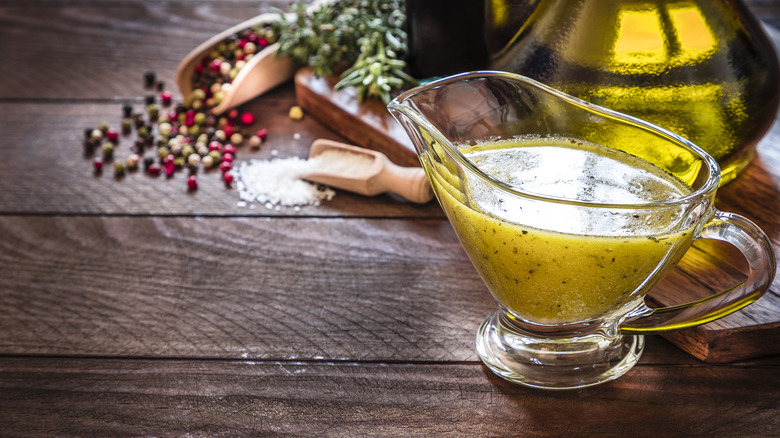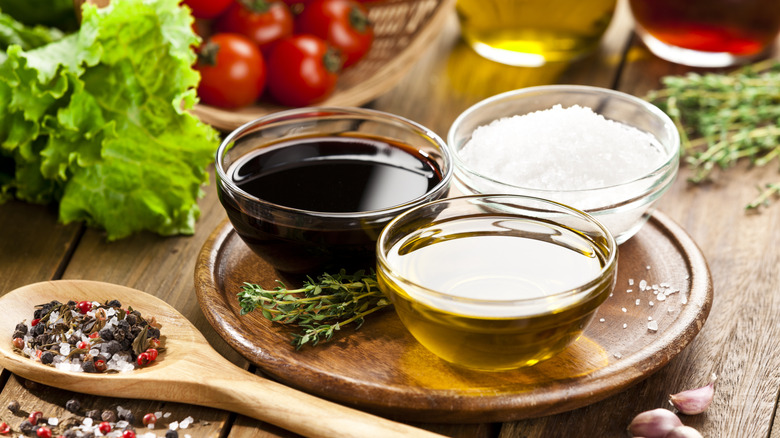The Easily Avoidable Mistake People Make With Vinaigrettes
A good vinaigrette made with quality ingredients is a boon to any dinner table. While it's not just for salad dressing, its most popular use is indeed to dress fresh greens. Vinaigrettes typically consist of fat, oil, and an acid (usually some kind of vinegar), but according to Chef David Kirschner, CEO and Founder of dineDK Private Dining, home cooks are making one major mistake when it comes to mixing their dressings, and that's "underestimating the impact of using multiple acidic ingredients," he says in an exclusive interview with Food Republic.
"A mundane dressing can easily be given life by combining different kinds of vinegar and citrus to make a complex dressing," he explains. "One of my favorites is a balsamic-lemon vinaigrette, where the balsamic is deep and complex [and] the lemon brings needed brightness and freshness to liven up the dressing." Other common citrus fruits you can use include oranges or limes — or, use a combination of them. Kirschner reminds us, "Also, whenever you plan to use citrus juice in a dressing, make sure to first zest the rind before juicing the citrus. Using the citrus zest brings a bright, fresh flavor to the dressing."
You could also do it like Alex Guarnaschelli and use Dijon mustard in a vinaigrette, which is acidic from the vinegar that it includes. Play around with different types of mustard, such as whole grain, hot, spicy brown, honey, and even plain old yellow.
How to make a great base for your vinaigrette
Before you go mixing in citrus juice and zest or mustard, though, you should know how to make a perfect base for your vinaigrette. Kirschner also has guidance the, starting with the amounts of oil and vinegar to use. "The rule of thumb is 2:1, oil to vinegar," he says in his exclusive interview with Food Republic. "This makes for a nice, acidic dressing that can stand up to most ingredients."
Kirschner is even more specific about mixing different oils. "For the oil portion of the ratio, I like to do a 3:1 ratio of neutral oil (canola, grapeseed, vegetable, etc.) to olive oil," he says. "In most cases, using all olive oil will create too strong of a flavor."
You have your choice of vinegars to pick from, too, including plain white, apple cider, balsamic, and your wine vinegars. All of them share that acidic bite but which come with their own unique flavor profiles. Whichever oils, vinegars, and additional acids you choose, though, Kirschner advises, "You always should taste as you go to ensure the seasoning (salt and pepper) is correct and the dressing has the acidity you want for your salad."


